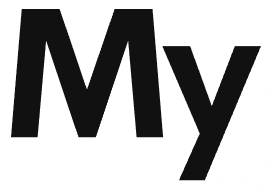Facebook’s Auction System
Facebook use auctions to determine which ads to show to the user. This is similar to how google price its ads. In this article we will explore how facebook’s Ad auction system works.
Facebook Ad Auction system has two goals :
- Create value for advertisers ( maximise return on investment)
- Provide positive user experience ( show relative ads )
Each time an auction takes place, facebook’s algorithm decide which ad to show based on Total Value for each Ad
Total Value = Advertiser bid * Estimated action rate + Ad quality
Lets go into each of these factors individually.
Advertiser bid :
Bid is the price that you are willing to pay for an Ad in dollars. This Ad bid can be either specificed manually or you can let facebook decide the best price. The important factor to note is that highest bid price does not guarantee that Ad will always be served to the audience your target audience. Final Ad display will always be calculated by Total Value formulae.
Estimated action rate :
Estimated action rate is based on Ad relevance. If an Ad is more aligned with user’s interest, it gets higher score. If same ad is less aligned, it gets lower score. We can understand it with an example.
| Ad | Audience Interest | Relevance Score
(hypothetical score out of 1) |
Estimated action rate |
| Creative 1 | Health & wellbeing | 0.8 | High |
| Creative 1 | Fast food & desserts | 0.1 | Low |
The scoring method used in the example above is arbitrary and only used for illustration purpose only.
While facebook does not explicitly lists the factors making up estimated action rate, following factors are indicative of what makes up estimated action rate.
- Relevant campaign objectives
- Relevant audience
- High quality creatives
- Historical conversion probability
Ad Quality :
Ad quality is determined by several factors. The actual factors are not explicitly given by facebook. However, the objective of Ad quality is that to serve relevant Ads to right audiences. The following factors contribute to Ad Quality score :
- CTR ( click-through rate of the ad)
- Ads relevancy score
- Crowdsourced Feedback of the Ad ( Ads hidden , reported bad)
- Text to Image ratio
- Landing Page experience
- Landing Page speed
- Authenticity of landing page
- Authenticity of business
- Popup, ads or other contents which can be detrimental for user experience
- Expected conversion rate
- Historical conversion rate
Weightage of factors ?
Facebook does not provide the weightage of each factor in the Total Value formulae. In an ideal world, advertiser’s would have the formulae with weigtahges e.g. if x,y and z are the weigthages then formulae would be like:
Total Value = (x)Advertiser bid * (y)Estimated action rate + (z)Ad quality
However, these weightages remain unknown to the advertisers. Only facebook knows the recipe of the secret sauce of x,y & z.
Facebook Charging Model:
Facebook has 3 charging models which it uses for billing its advertisers.
- CPM billing
- Link click billing
- Action based billing
1. CPM billing:
Since facebook is primarily a display based Ad platform. It’s most dominant biling format is CPM. CPM stands for cost per Mile ( 1000). As an example, if an ad’s cost is $1 per CPM. This implies, when the Ad will be served 1000 times, then advertiser will pay $1.
2. Link click billing:
Facebook also gives an option of paying when a user clicks the link on an Ad.
3. Action based billing:
Action based billing charges advertiser on the bases of certain actions e.g. When a user watches a complete video etc.
